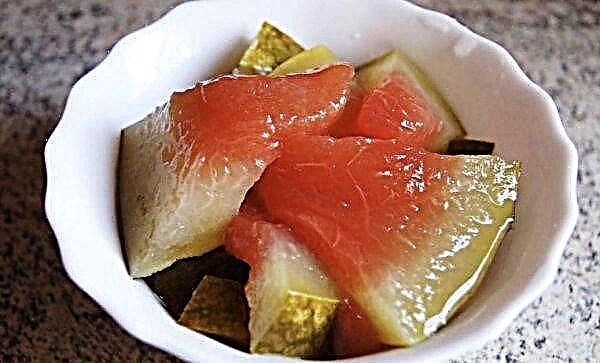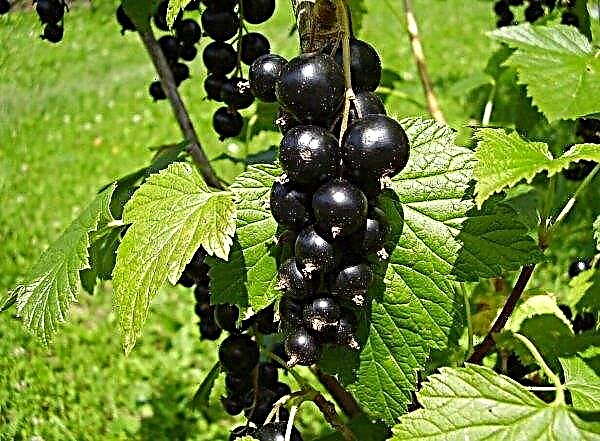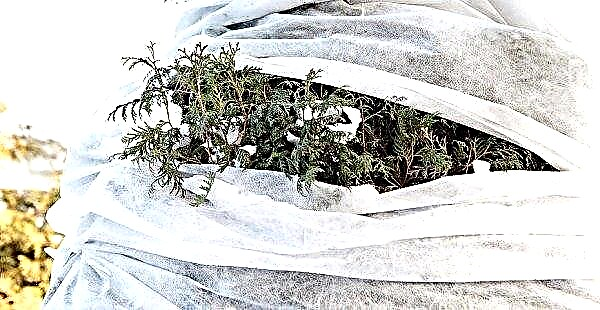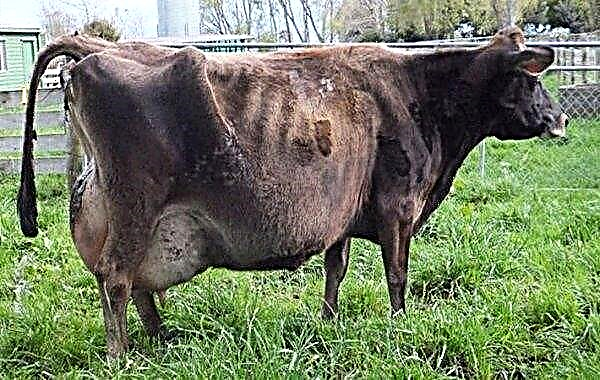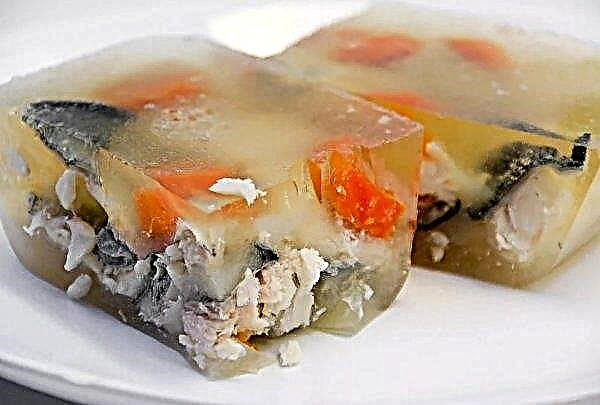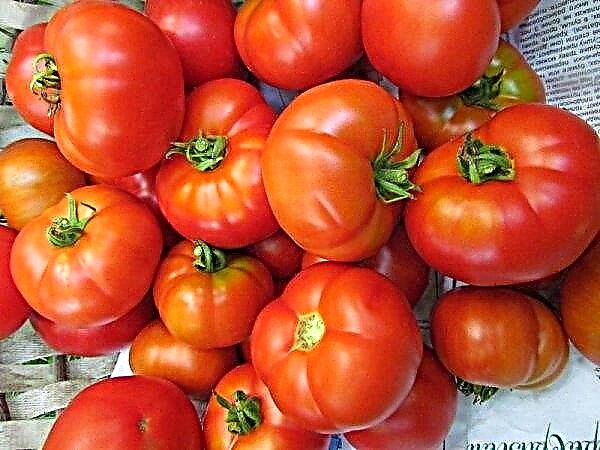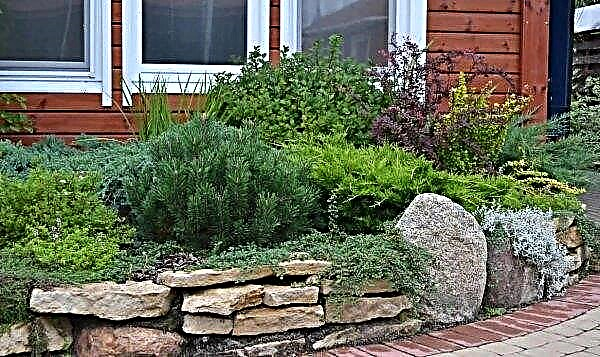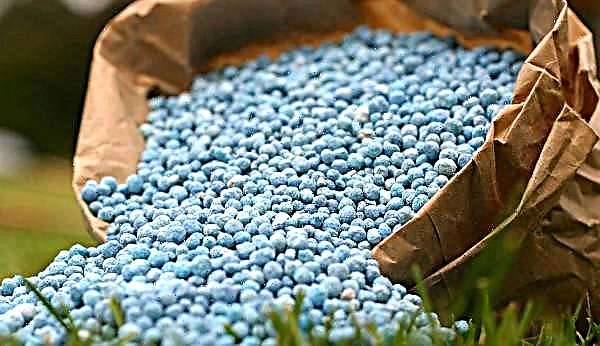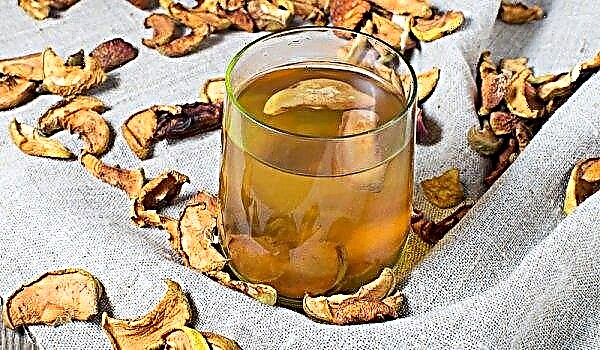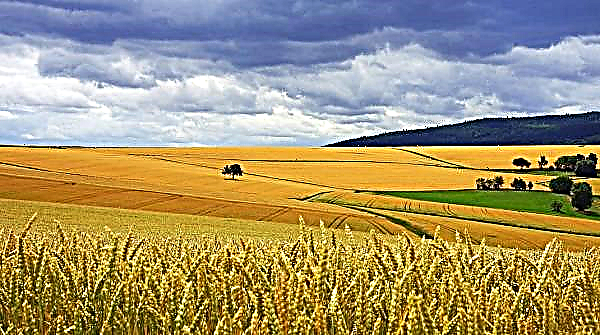Currently, about 1,500 varieties of gooseberries are known to exist. Before deciding which one to grow at your summer cottage or personal plot, you should familiarize yourself with its detailed description, planting and care rules.
Variety description Russian red
Gooseberry varieties Russian red refers to large-fruited high-yielding varieties of medium-late ripening. Fruits that have reached maturity can be harvested from the 20th of July. A full crop occurs in the bushes 2 years after planting.
Grade history
The variety was obtained by employees of the Institute of Horticulture named after Michurin. Introduced to the State Register in 1959. Suitable for cultivation in all regions of Russia, except for the Urals. Popular among gardeners in the suburbs.
Appearance, characteristics of berries, ripening time, yield
Bushes in this variety grow medium in height — they do not exceed 1.5–1.8 m. Spreading at a young age, with a small number of branches, they become compact in the mature period. Shoots are thick, arched, without pubescence. The level of hissing is average. The leaves are medium in size, green in color, have 5 lobes. The top sheet plate is opaque, folded. During flowering, small flowers with pale petals appear on the bush.
During flowering, small flowers with pale petals appear on the bush.
During fruiting, large and medium sized fruits are formed, weighing 3–6 g. In shape, they resemble ovals or ellipses. The skin of fully ripened specimens is dark red, of medium thickness, with strongly pronounced pink veins. There is no pubescence on her. There is a wax coating.
The taste of pulp is sweet and sour. It is characterized by juiciness, tenderness and aroma. The seed content is average. Berries keep on a bush for a long time after ripening, not crumbling. Taste qualities of fruits are evaluated by tasters at 4–4.4 points on a five-point scale. Productivity is high - 3-5 kg of berries from one bush.
Did you know? In the twentieth century. powdery mildew destroyed all the gooseberry plantings. Breeders had to develop varieties suitable for cultivation in this country, again.
The fruits can be used for universal purposes - for fresh consumption, for making jam, drinks, marmalade. Suitable for the production of dry and semi-sweet wines. They are well stored and carry transportation.
Advantages and disadvantages of the variety
- Gardeners who have already appreciated the quality of the variety Russian Red, note such positive characteristics:
- self-fertility;
- high level of productivity;
- ability to tolerate dry periods and frosty temperatures;
- excellent resistance to pathogens of powdery mildew, septoria;
- the versatility of the fruit;
- unpretentiousness in leaving;
- regular fruiting for 15 years.
Significant deficiencies in the variety were not identified.
Agricultural technology
In order to grow highly productive plants, it is necessary to choose a good site for them, to plant and carry out regular maintenance correctly. For bushes, watering, top dressing, pruning, mulching, cultivation is necessary.

Seat selection
A place for planting gooseberry bushes should be chosen sunny. When grown in the shade, the berries will fade and lack sweets. In addition, the yield of bushes will decrease significantly.
Most often, gooseberries are planted near the fence. If this site was previously occupied by other plants, then the rules for changing crops should be observed. In accordance with them, good predecessors for gooseberries are potatoes, beets, legumes, siderates. It is impossible to plant the described culture in the place where raspberries used to grow. Also, it should not be planted in close proximity to currant bushes. This increases the risk of mass spread of diseases and pests that are common in these crops.
Important! If you grow this variety in close proximity to small-fruited bushes, then they increase berries and increase productivity.
It is important that the groundwater on the site does not approach the surface of the earth closer than 1.5 m. Gooseberries do not respond well to moisture congestion. When grown in highly waterlogged soil, the risk of decay of the root collar and death of bushes increases significantly.
Well-fertilized clay, loamy, sandy and sandy soils with a slightly acidic or neutral pH are suitable for growing the described crop. This berry plant will not grow in acidic, swampy and cold soil.
Planting and care, pollination
Gooseberries can be planted both in spring and autumn, depending on the region of cultivation. In spring, it is necessary to have time to plant during the period when the ground is thawing, but the vegetation period has not yet arrived, i.e. the kidneys did not swell. After swelling of the kidneys, planting is no longer worthwhile. The plant will often hurt and wither.

In autumn, planting should be done 1–1.5 months before the first frost. During this time, young bushes will be able to take root well and adapt to growing conditions.
The technology for planting gooseberry seedlings is as follows:
- In the prepared area, it is necessary to make trenches with a depth of 0.5 m.
- Dig holes in them at a distance of 1 m from each other.
- Rotated organic fertilizers (10 kg), wood ash (100 g), double superphosphate (50 g), potassium sulfide (40 g) must be added to each pit.
- Prepare one or two year old seedlings by removing dry roots and pruning the shoots, leaving 5 buds on them.
- Place the seedlings in the hole under a slight slope.
- Fill the hole with soil to the top.
- Seal up.
- To carry out plentiful watering.
When planting next to other plants, a distance of 1.5 m must be observed. At least 1 m must be retreated from the fence.
Important! Gooseberries have a superficial root system, so loosening the trunk area should be done carefully and no deeper than 7 cm.
In the future, plants must be regularly watered. The best way to moisturize is by drip or subsoil watering. The sprinkling method for gooseberries is not suitable. During the season, you need to spend 3-5 humidifications. It is especially important that the bushes receive the necessary amount of moisture during the flowering and fruiting period.
 Irrigation must be combined with loosening the soil.
Irrigation must be combined with loosening the soil.
If the soil is dense, digging will be required. This is necessary to prevent the appearance of a hard crust on the surface of the earth, which prevents the normal flow of moisture and air to the roots.
An important care measure is weeding. Weeds should be removed in a timely manner so that the gooseberry bushes lack nutrients, light, moisture, and also to prevent the development of diseases and attacks of harmful insects.
After watering, it is advisable to mulch the soil. A dense layer of mulch allows you to save the necessary moisture, restrain the growth of weeds, reduce the number of irrigation and weeding.

Gooseberry dressings need a little - only 2 per season. The first is made after flowering. It is necessary to add a mixture of rotted manure or compost (10 kg) with superphosphate (80 g), nitrate (10 g), potassium chloride (20 g) under each bush. The same fertilizing is carried out after harvesting the fruits.
Fertilizers are applied under the root, after moistening the soil. If top dressing is done in dry soil, then you can burn the roots. Since the variety Russian Red is self-fertile, it is not necessary to plant pollinating plants in close proximity.
Pest and Disease Control
Gooseberry Russian red is distinguished by strong immunity. Therefore, if the owner of the site has chosen the place of cultivation correctly, has not violated the planting technology and produces quality care, then the risk that he will encounter diseases or pests is very small.
Important! Chemical treatment should be carried out in mild weather, in the evening or on a cloudy day when there is no rain and wind.
However, with errors in growing gooseberry bushes, such diseases threaten:
- Anthracnose. The main symptom of the disease is small brown spots on the leaves with tubercles. For the purpose of prevention and treatment of the disease, spraying is used with Nitrofen, copper sulfate.
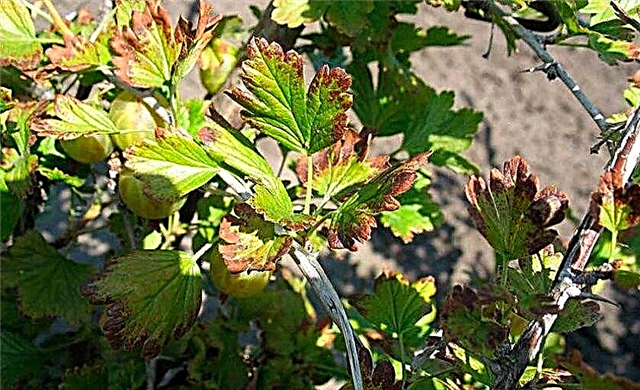
- Mosaic. The causative agent of this disease is the virus. It leads to the appearance of light green spots on the leaves. Like all viral diseases, mosaics are not treatable. If infection has occurred, diseased bushes should be removed as soon as possible from the site and disposed of by burning to prevent the spread of the virus.

Of the pests, a threat to gooseberry bushes is represented by a fire-mill, sawfly, and aphid.
Fire The butterfly fire itself is not harmful to plants. The danger to them is its larvae, because they eat fruits. During its short life, one larva is able to spoil 6 berries. In order to prevent the fire from coming to gooseberry plantings, experienced gardeners recommend planting mint and tomatoes in the immediate vicinity. Their smell will scare away the butterfly and prevent it from laying eggs. With a small number of larvae, folk remedies are used: spraying with wood ash, extract from tomato tops, pine needles extract, mustard tincture. In advanced cases, the drugs “Bitoxibacillin”, “Iskra”, “Karate” will help to eliminate the pest.

Sawfly. An insect that does huge harm to gooseberries by eating leaves. As a result, the formation of smaller berries, a decrease in yield, winter hardiness of the bushes are observed. It is important to take preventive measures: during budding, add wood ash (2 tablespoons), dry mustard (1 tablespoon), ground pepper (1 tablespoon) under the bushes, spray with “Karbofos” during budding , after flowering, to process tobacco, ash or mustard infusions. In case of infection, Bitoxibacillin, Inta-Vir, and Decis are used.

Aphid. This parasite can be found on the lower leaf plate or on the tops of young shoots. It feeds on plant juices. As a result, the leaves turn yellow, dry, deform and fall off. Then the berry culture stops growing and soon dies. If the insect has not yet spread much in the garden, then you can try to fight it with folk methods: spraying with decoctions of tomato tops, garlic infusion, soap solution, mustard infusion. In case of mass damage to the landings, it is necessary to connect chemicals, for example, Fitoverm, Aktaru, Iskra, Inta-Vir.
Trimming and shaping a bush
One of the most important gooseberry care measures is pruning and shaping the bush. When planting, the plant is shortened by two-thirds. The following year, skeletal branches are cut in half. In the next 2 years, one third of new shoots are shortened. Activities for the formation of the bush are made until the plant reaches the age of 4 years.
From the fourth year of life, every spring and autumn it is necessary to make sanitary scraps, removing old (older than 3–6 years), diseased, dry, damaged branches. You should also regularly cut the root shoot. To increase yield, some gardeners prune green shoots in the summer so that they leave 5-7 leaves.

Wintering
Gooseberries must be properly prepared for winter. Start by trimming the bushes after harvesting. Damaged branches should be cut to the root. On the bush you need to leave no more than 10-15 branches. Also, before winter, plants should be fed. At this time, manure and phosphorus-potassium mixtures are introduced. In order that harmful insects and pathogens of fungal diseases could not winter, it is necessary to treat plants with fungicidal and insecticidal agents.
The final step in preparing for winter is mulching. As mulch, humus or peat is used, laying in a layer of 10 cm. As soon as the snow falls, it will need to be thrown in thick layers on the bushes. If there is no snow or too little snow, then agrofibre shelter should be built.
Harvesting and transportation
Gooseberries usually sing at the same time. Therefore, harvesting does not stretch for a long time. Once the berries have reached the declared size, the skin will turn dark red, and the flesh will appear sweet, they can be removed from the bushes. For processing, the fruits are harvested in a state of technical ripeness - still sour.
Berries are harvested manually, mechanized and semi-mechanized. When cleaning hands, gloves should be protected with gloves and long sleeves. The branches must be carefully lifted with one hand, and the other carefully picking the berries, leaving the stalk. For mechanical assembly, a special vibrator is used. This method allows you to pick berries in a short time, but has one significant drawback - with it, both mature and immature fruits are harvested indiscriminately. Therefore, in the future, the crop needs to be sorted.
 With semi-mechanized collection, a special device called a comb is used. It is purchased or made with your own hands. The comb is put on the thumb, carried along a branch and plucked several berries at the same time without a stalk.
With semi-mechanized collection, a special device called a comb is used. It is purchased or made with your own hands. The comb is put on the thumb, carried along a branch and plucked several berries at the same time without a stalk.
Fully ripened berries can be stored in the refrigerator for 4 days. Unripe - up to 10 days. Sorted and rejected berries with dry skin at a temperature of 0 ° C can be stored for up to 1.5 months. To preserve healthy fruits for up to six months, they can be frozen. You need to transport berries in containers up to 2.5 liters. After harvesting, the fruits intended for transport are recommended to be cooled.
So, the gooseberry variety Russian Red is appreciated because of its high productivity, strong immunity, stable fruiting and high frost resistance. It’s easy to take care of him. Even with minimal care, shrubs will consistently produce good yields for 15 years.Did you know? Kiwi is a cultivated version of Chinese gooseberries.



